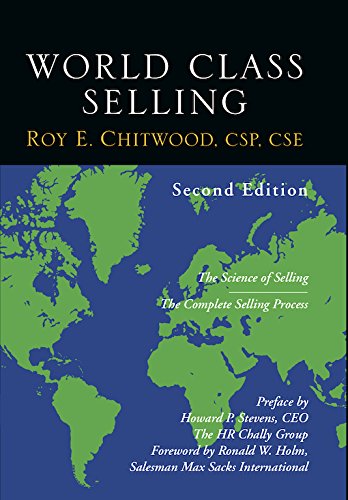
While sales and marketing functions are different, the two teams share a common goal: to present products and services in a way that creates new customers and keeps existing customers coming back for more. In his Track Selling System, master trainer Roy E. Chitwood taught salespeople (and marketers) what he believed was a scientific approach to selling (and marketing). It included seven steps in the sales process, five buying decisions and six universal buying motives.
While all three areas are important, let’s focus on buying motives—what they are and why they matter. Buying motives represent the reasons why people buy products and services, regardless of the size or price. These trigger points reflect an individual’s needs, inner feelings, instincts, drives, desires and emotions. By understanding these motives, marketers and salespeople can better appeal to their target audiences. Whether through website content, presentations, blogs, bylined articles, white papers, newsletters or other forms of communications content, tapping into the audiences’ buying motives helps close more deals and address the pain points certain products and services features solve. In this context, recognizing why buyers make these decisions allows you to better speak to their needs and challenges.
The 6 Buying Motives

In his sales workshops and his book World Class Selling, Chitwood identified the reasons people buy. He calls these reasons “buying motives.” The six universal buying motives are:
- Desire for gain. The individual who has a strong desire for gain is attempting to advance, increase or grow in some way. Financial advantage is likely the first gain to come to mind, whether through greater revenue or higher profits. Also, desire for gain can refer to the personal or team growth that comes through acquiring advanced skills, higher education or additional resources. When marketing to this type of buyer, it’s essential to communicate the benefits of a product or service in ways that demonstrate improvement, achievement, reward, return on investment and other advances.
- Fear of loss. Individuals with a strong fear of loss are not risk takers. They make decisions based on protecting something and avoiding unnecessary costs, potential damage, harm or injury—whether real or perceived. Chitwood provides examples: “It may be the services of a security firm to patrol a warehouse at night. It may be a subscription to a magazine that carries all the latest in market trends and prices. Or it could be buying insurance to cover liability on your own product lest a lawsuit ruin you.” In all cases, these buyers are searching for products or services to help hold onto something they already have that can possibly be lost or taken by others.
- Comfort and convenience. Desire for comfort and convenience is a basic human need. To appeal to individuals with this buying motive, think about what features a product or service offers in terms of ease of use, flexibility, expediency and adaptability. In a 24/7 business environment, where customers can make purchases online in the comfort of their homes at any time of day or night, these options appeal to those looking for comfort and convenience.
- Security and protection. When it comes to this buying motive, individuals are hoping to avoid or reduce a potential or impending harm. Similar to fear of loss, harm can be defined in terms of oneself, one’s company or one’s product. This motive comes from the knowledge that something can be damaged. For example, think about cybersecurity, stolen identities, access control and medical alert systems. All provide a solution to the need for security and protection.
- Pride of ownership. Certain brands and high-quality products carry a grandeur or desirability due to their reputation and name recognition. Emotions that appeal to these folks include gratification, high class, enjoyment, happiness and dignity. Chitwood poses that “there is a bit of ‘label mentality’ in most of us. Most will pay a premium to own an exclusive item just on the feeling of pride one gets by the ownership experience. Be it an exquisitely crafted pen or a high-performance sports car, some of these will be hard to justify logically.”
- Satisfaction of emotion. This buying motive has to do with stimulating an emotional response in an individual or group. Emotions to satisfy include surprise, delight or approval. All of these put the buyer in a favorable light and thus admired by others. Steve Fawthrop of SWAT Systems provides the example, “Think about the premium paid by a company to be a sponsor for the Olympics or World Cup. The total value of association cannot be measured in just dollars and cents whether it on the global stage or sponsoring a panel discussion at a trade show or seminar.”
Each of us has multiple buying motives at play when making a purchase decision, but usually, there are one or two dominant ones, depending on the individual and the circumstances. In sales and marketing, it’s important to discover which ones drive the buying decisions of your prospects and customers. Remember, buying motives are emotional, and therefore, sales decisions are often based on emotion. The key is to help customers after the sale to be able to justify the purchase with logic.
Show Them You Care

As Chitwood says, “People don’t care how much you know until they know how much you care.” To do this effectively requires excellent communications skills, asking quality open-ended questions and listening carefully to your prospect and buyers. In that way, you’ll develop a better understanding of what they want, what they need and why they will buy. It will help you tap into their psyche to uncover what’s important to them. Armed with that information, you can create the marketing communications content that demonstrates your understanding of the needs of your prospects and customers. Always aim to address how your products or services will help prospects solve a problem, improve performance or demonstrate leadership. When you do this, you will build trust, rapport and empathy with target audiences. With this goal in mind, you can set your company apart from the competition.
